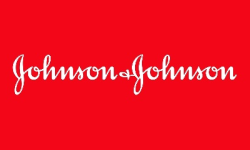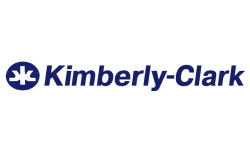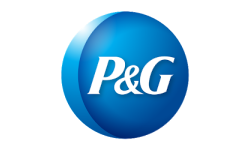
Global Prebiotics Market by Ingredients (Inulin, GOS, MOS, FOS), by Application (Dietary Supplements, Food, Animal Feed, Beverages) and Region (North America, Latin America, Europe, Asia Pacific and Middle East & Africa), Forecast To 2028
Industry Insights
Global prebiotics demand was 623.5 kilogramons in 2015. It grew at 8.0% CAGR between 2016 and 2024. Prebiotics are expected to increase in demand due to their health benefits. The market will be driven by technological advances in the development of inulin, oligosaccharides and inulin.
Over the next seven years, the market is expected to grow due to rising demand for supplements and consumer awareness regarding the health benefits that fiber offers. The market is expected to grow further due to the rising cultivation and harvesting prebiotic natural herbs in Europe.
Companies are investing more in Research & Development (R&D), in order to develop new ingredients. Consumers are becoming more willing to pay a premium for products that contain prebiotics. This has allowed manufacturers to increase their active health management programs, which will drive market growth in the forecast period.
Prebiotics can be used for many purposes, including texture enhancement and sweetness without adding sugar to food or beverages. Over the forecast period, product growth will be driven by growing concern about sugar diseases. In addition, the major prebiotic ingredients such as inulin and fructo-oligosaccharide (FOS) find their demand from products that require low-calorie sweetening taste, thus propelling the overall prebiotic sector growth over the forecast period.
Ingredients Insights
Global prebiotic market revenue was 38.06% in 2015, with the dominance of inulin. Market growth is expected to be driven by the rising demand for inulin in baked goods and drinks. Global product demand for galacto-oligosaccharides (GOS) was USD 637.3 million in 2015, growing at an optimistic CAGR of 9.6% from 2016 to 2024. Demand is expected to rise over the next eight years due to rising demand for synbiotics and their growing use in infant food.
The growing application of fructo-oligosaccharide (FOS) in dietary fibers and its ability to prevent gastro-intestinal diseases is expected to boost the market demand over the forecast period. FOS's revenue share is expected to rise to 22.96% in 2024 due to the increased use of FOS by people with bacterial infections in long-term facilities and hospital wards. The demand for mannan-oligosaccharide (MOS) ingredients is rising due to the growing demand for prebiotics in animal feeds. The market will be constrained by the lack of MOS ingredients and the increased cost of raw material.
Application Insights
Global prebiotics market share was 82% in 2015, with food & beverages accounting for 82%. Prebiotics will be more widely used in food and beverages if there are healthy colon microorganisms.
The global prebiotics market for animal feed reached USD 281.9million in 2015. This figure is expected to grow at a optimistic 10.5% CAGR from 2016-2024. Prebiotics will be more in demand due to the increasing importance of animal protein and the fortification of animal food with bacteria that improves the health of the animals.
These products will see a rise in demand due to rising consumer awareness about the importance of protein consumption for maintaining ideal nutrition levels and maintaining muscle mass. A healthy lifestyle and increased awareness about the benefits of protein will play an important role in increasing demand for dietary supplements.
Demand for the product in different applications is driven by the aging population and growing concerns about gut health. Over the forecast period, the market will see a rise in demand due to rising consumer spending on products which improve the health and function of the intestines.
Regional Insights
The Asia Pacific market is expected to grow at 10.7% in terms of revenue between 2016 and 2024. Countries such as India, China, Japan and China have high dairy product consumptions and a high population. China's total dairy consumption increased 0.8% to 39.425 tons in 2015.
The market for prebiotics in Australia is also driven by the search for food-based drugs substitutes and lifestyle diseases. Prebiotics are expected to increase in demand in Australia due to their role in controlling obesity, and other gut-related illnesses. Prebiotics will be in high demand due to the growing popularity of dairy products.
Due to increasing consumer awareness and the aging population, there is a growing demand for prebiotics. The Australian dairy industry is maturing and adapting in response to global changes, which will increase the demand for prebiotics in the country.
The prebiotics market in Europe dominated. It is expected that the industry will grow at 10.2% between 2016 and 2024. Market growth is expected to be driven by product diversification and increasing importance of prebiotics in the food- and beverage industries. North America will experience a 9.7% growth rate between 2016 and 2024. In the United States, there has been an increase in disease incidence including PEDv and BSE. This has led to a greater importance of animal feed ingredients in order to ensure quality feed for manufacturers.
Over the forecast period, income in Brazil, Argentina and China is expected to increase dietary supplement consumption and fuel prebiotics market demand. Market growth will be aided by a rising domestic demand for meat from major countries like Brazil, Argentina, Chile, and Chile.
Market Share in Prebiotics
The prebiotics industry is fragmented, with many companies involved in extracting and processing prebiotics from raw materials. Cargill Inc., Kraft Foods Group, Inc., Abbott Laboratories, Beneo GmbH, Bright Food (Group) Corporation Limited are some of the largest manufacturers. Companies are now focusing on R&D, which combines technological advancement in extracting and refining raw materials with the adoption of new technologies for food manufacturing.
Companies are expanding their strategic expansions, mergers and acquisitions, as well as new product development activities. This is expected to increase the demand for prebiotics. The industry presence and large production base of starch producers such as ADM, Cargill Foods, and Beneo in North America will be able to meet the rising demand for prebiotics.
These are the most frequently asked questions about this report
What are the major players in the prebiotics marketb. Cargill Inc., Kraft Foods Group, Inc., Abbott Laboratories, Beneo GmbH, Bright Food (Group) Corporation Limited are some of the key players in the prebiotics marketplace.
What are the driving factors for the prebiotics marketb. Prebiotics are gaining popularity in the dairy industry because of their health benefits. The market is expected to grow due to technological advances in the development of inulin, oligosaccharides and other prebiotics.
What is the size of the prebiotics marketb. Global prebiotics market was valued at USD 4.45 Billion in 2019, and is projected to grow to USD 4.93 Billion by 2020.
What is the market growth in prebiotics?b. Global prebiotics sales are expected to increase at a compound annual rate of 10.5% between 2019 and 2025, reaching USD 7.11 billion in 2025.
Which market segment had the largest prebiotics market shares?b. With a market share of 40.5%, Europe was the dominant player in prebiotics in 2019, This can be attributed to product diversification as well as its increasing importance in the food- and beverage industries.
Up Market Research published a new report titled “Prebiotics Market research report which is segmented by Ingredients (Inulin, GOS, MOS, FOS), by Application (Dietary Supplements, Food, Animal Feed, Beverages), By Players/Companies Abbott Laboratories, Bright Food (Group) Corporation Limited, Inc, Kraft Foods Group, Beneo GmbH, Cargill Inc”. As per the study the market is expected to grow at a CAGR of XX% in the forecast period.
Report Scope
| Report Attributes | Report Details |
| Report Title | Prebiotics Market Research Report |
| By Ingredients | Inulin, GOS, MOS, FOS |
| By Application | Dietary Supplements, Food, Animal Feed, Beverages |
| By Companies | Abbott Laboratories, Bright Food (Group) Corporation Limited, Inc, Kraft Foods Group, Beneo GmbH, Cargill Inc |
| Regions Covered | North America, Europe, APAC, Latin America, MEA |
| Base Year | 2020 |
| Historical Year | 2018 to 2019 (Data from 2010 can be provided as per availability) |
| Forecast Year | 2028 |
| Number of Pages | 225 |
| Number of Tables & Figures | 158 |
| Customization Available | Yes, the report can be customized as per your need. |
The report covers comprehensive data on emerging trends, market drivers, growth opportunities, and restraints that can change the market dynamics of the industry. It provides an in-depth analysis of the market segments which include products, applications, and competitor analysis.

Global Prebiotics Market Report Segments:
The market is segmented by Ingredients (Inulin, GOS, MOS, FOS), by Application (Dietary Supplements, Food, Animal Feed, Beverages).
Prebiotics Market research report delivers a close watch on leading competitors with strategic analysis, micro and macro market trend and scenarios, pricing analysis and a holistic overview of the market situations in the forecast period. It is a professional and a detailed report focusing on primary and secondary drivers, market share, leading segments and geographical analysis. Further, key players, major collaborations, merger & acquisitions along with trending innovation and business policies are reviewed in the report.
Key Benefits for Industry Participants & Stakeholders:
- Industry drivers, restraints, and opportunities covered in the study
- Neutral perspective on the market performance
- Recent industry trends and developments
- Competitive landscape & strategies of key players
- Potential & niche segments and regions exhibiting promising growth covered
- Historical, current, and projected market size, in terms of value
- In-depth analysis of the Prebiotics Market
Overview of the regional outlook of the Prebiotics Market:
Based on region, the market is segmented into North America, Europe, Asia Pacific, Latin America and Middle East & Africa (MEA). North America region is further bifurcated into countries such as U.S., and Canada. The Europe region is further categorized into U.K., France, Germany, Italy, Spain, Russia, and Rest of Europe. Asia Pacific is further segmented into China, Japan, South Korea, India, Australia, South East Asia, and Rest of Asia Pacific. Latin America region is further segmented into Brazil, Mexico, and Rest of Latin America, and the MEA region is further divided into GCC, Turkey, South Africa, and Rest of MEA.

Highlights of The Prebiotics Market Report:
- The market structure and projections for the coming years.
- Drivers, restraints, opportunities, and current trends of Prebiotics Market.
- Historical data and forecast.
- Estimations for the forecast period 2028.
- Developments and trends in the market.
1. Inulin
2. GOS
3. MOS
4. FOS
7. By Application:1. Dietary Supplements
2. Food
3. Animal Feed
4. Beverages
- Market scenario by region, sub-region, and country.
- Market share of the market players, company profiles, product specifications, SWOT analysis, and competitive landscape.
- Analysis regarding upstream raw materials, downstream demand, and current market dynamics.
- Government Policies, Macro & Micro economic factors are also included in the report.
We have studied the Prebiotics Market in 360 degrees via. both primary & secondary research methodologies. This helped us in building an understanding of the current market dynamics, supply-demand gap, pricing trends, product preferences, consumer patterns & so on. The findings were further validated through primary research with industry experts & opinion leaders across countries. The data is further compiled & validated through various market estimation & data validation methodologies. Further, we also have our in-house data forecasting model to predict market growth up to 2028.
How you may use our products:
- Correctly Positioning New Products
- Market Entry Strategies
- Business Expansion Strategies
- Consumer Insights
- Understanding Competition Scenario
- Product & Brand Management
- Channel & Customer Management
- Identifying Appropriate Advertising Appeals

Reasons to Purchase the Prebiotics Market Report:
- The report includes a plethora of information such as market dynamics scenario and opportunities during the forecast period
- Segments and sub-segments include quantitative, qualitative, value (USD Million,) and volume (Units Million) data.
- Regional, sub-regional, and country level data includes the demand and supply forces along with their influence on the market.
- The competitive landscape comprises share of key players, new developments, and strategies in the last three years.
- Comprehensive companies offering products, relevant financial information, recent developments, SWOT analysis, and strategies by these players.
Chapter 2 Assumptions and Acronyms Used
Chapter 3 Research Methodology
Chapter 4 Prebiotics Market Overview
4.1 Introduction
4.1.1 Market Taxonomy
4.1.2 Market Definition
4.1.3 Macro-Economic Factors Impacting the Market Growth
4.2 Prebiotics Market Dynamics
4.2.1 Market Drivers
4.2.2 Market Restraints
4.2.3 Market Opportunity
4.3 Prebiotics Market - Supply Chain Analysis
4.3.1 List of Key Suppliers
4.3.2 List of Key Distributors
4.3.3 List of Key Consumers
4.4 Key Forces Shaping the Prebiotics Market
4.4.1 Bargaining Power of Suppliers
4.4.2 Bargaining Power of Buyers
4.4.3 Threat of Substitution
4.4.4 Threat of New Entrants
4.4.5 Competitive Rivalry
4.5 Global Prebiotics Market Size & Forecast, 2018-2028
4.5.1 Prebiotics Market Size and Y-o-Y Growth
4.5.2 Prebiotics Market Absolute $ Opportunity
Chapter 5 Global Prebiotics Market Analysis and Forecast by Ingredients
5.1 Introduction
5.1.1 Key Market Trends & Growth Opportunities by Ingredients
5.1.2 Basis Point Share (BPS) Analysis by Ingredients
5.1.3 Absolute $ Opportunity Assessment by Ingredients
5.2 Prebiotics Market Size Forecast by Ingredients
5.2.1 Inulin
5.2.2 GOS
5.2.3 MOS
5.2.4 FOS
5.3 Market Attractiveness Analysis by Ingredients
Chapter 6 Global Prebiotics Market Analysis and Forecast by Application
6.1 Introduction
6.1.1 Key Market Trends & Growth Opportunities by Application
6.1.2 Basis Point Share (BPS) Analysis by Application
6.1.3 Absolute $ Opportunity Assessment by Application
6.2 Prebiotics Market Size Forecast by Application
6.2.1 Dietary Supplements
6.2.2 Food
6.2.3 Animal Feed
6.2.4 Beverages
6.3 Market Attractiveness Analysis by Application
Chapter 7 Global Prebiotics Market Analysis and Forecast by Region
7.1 Introduction
7.1.1 Key Market Trends & Growth Opportunities by Region
7.1.2 Basis Point Share (BPS) Analysis by Region
7.1.3 Absolute $ Opportunity Assessment by Region
7.2 Prebiotics Market Size Forecast by Region
7.2.1 North America
7.2.2 Europe
7.2.3 Asia Pacific
7.2.4 Latin America
7.2.5 Middle East & Africa (MEA)
7.3 Market Attractiveness Analysis by Region
Chapter 8 Coronavirus Disease (COVID-19) Impact
8.1 Introduction
8.2 Current & Future Impact Analysis
8.3 Economic Impact Analysis
8.4 Government Policies
8.5 Investment Scenario
Chapter 9 North America Prebiotics Analysis and Forecast
9.1 Introduction
9.2 North America Prebiotics Market Size Forecast by Country
9.2.1 U.S.
9.2.2 Canada
9.3 Basis Point Share (BPS) Analysis by Country
9.4 Absolute $ Opportunity Assessment by Country
9.5 Market Attractiveness Analysis by Country
9.6 North America Prebiotics Market Size Forecast by Ingredients
9.6.1 Inulin
9.6.2 GOS
9.6.3 MOS
9.6.4 FOS
9.7 Basis Point Share (BPS) Analysis by Ingredients
9.8 Absolute $ Opportunity Assessment by Ingredients
9.9 Market Attractiveness Analysis by Ingredients
9.10 North America Prebiotics Market Size Forecast by Application
9.10.1 Dietary Supplements
9.10.2 Food
9.10.3 Animal Feed
9.10.4 Beverages
9.11 Basis Point Share (BPS) Analysis by Application
9.12 Absolute $ Opportunity Assessment by Application
9.13 Market Attractiveness Analysis by Application
Chapter 10 Europe Prebiotics Analysis and Forecast
10.1 Introduction
10.2 Europe Prebiotics Market Size Forecast by Country
10.2.1 Germany
10.2.2 France
10.2.3 Italy
10.2.4 U.K.
10.2.5 Spain
10.2.6 Russia
10.2.7 Rest of Europe
10.3 Basis Point Share (BPS) Analysis by Country
10.4 Absolute $ Opportunity Assessment by Country
10.5 Market Attractiveness Analysis by Country
10.6 Europe Prebiotics Market Size Forecast by Ingredients
10.6.1 Inulin
10.6.2 GOS
10.6.3 MOS
10.6.4 FOS
10.7 Basis Point Share (BPS) Analysis by Ingredients
10.8 Absolute $ Opportunity Assessment by Ingredients
10.9 Market Attractiveness Analysis by Ingredients
10.10 Europe Prebiotics Market Size Forecast by Application
10.10.1 Dietary Supplements
10.10.2 Food
10.10.3 Animal Feed
10.10.4 Beverages
10.11 Basis Point Share (BPS) Analysis by Application
10.12 Absolute $ Opportunity Assessment by Application
10.13 Market Attractiveness Analysis by Application
Chapter 11 Asia Pacific Prebiotics Analysis and Forecast
11.1 Introduction
11.2 Asia Pacific Prebiotics Market Size Forecast by Country
11.2.1 China
11.2.2 Japan
11.2.3 South Korea
11.2.4 India
11.2.5 Australia
11.2.6 South East Asia (SEA)
11.2.7 Rest of Asia Pacific (APAC)
11.3 Basis Point Share (BPS) Analysis by Country
11.4 Absolute $ Opportunity Assessment by Country
11.5 Market Attractiveness Analysis by Country
11.6 Asia Pacific Prebiotics Market Size Forecast by Ingredients
11.6.1 Inulin
11.6.2 GOS
11.6.3 MOS
11.6.4 FOS
11.7 Basis Point Share (BPS) Analysis by Ingredients
11.8 Absolute $ Opportunity Assessment by Ingredients
11.9 Market Attractiveness Analysis by Ingredients
11.10 Asia Pacific Prebiotics Market Size Forecast by Application
11.10.1 Dietary Supplements
11.10.2 Food
11.10.3 Animal Feed
11.10.4 Beverages
11.11 Basis Point Share (BPS) Analysis by Application
11.12 Absolute $ Opportunity Assessment by Application
11.13 Market Attractiveness Analysis by Application
Chapter 12 Latin America Prebiotics Analysis and Forecast
12.1 Introduction
12.2 Latin America Prebiotics Market Size Forecast by Country
12.2.1 Brazil
12.2.2 Mexico
12.2.3 Rest of Latin America (LATAM)
12.3 Basis Point Share (BPS) Analysis by Country
12.4 Absolute $ Opportunity Assessment by Country
12.5 Market Attractiveness Analysis by Country
12.6 Latin America Prebiotics Market Size Forecast by Ingredients
12.6.1 Inulin
12.6.2 GOS
12.6.3 MOS
12.6.4 FOS
12.7 Basis Point Share (BPS) Analysis by Ingredients
12.8 Absolute $ Opportunity Assessment by Ingredients
12.9 Market Attractiveness Analysis by Ingredients
12.10 Latin America Prebiotics Market Size Forecast by Application
12.10.1 Dietary Supplements
12.10.2 Food
12.10.3 Animal Feed
12.10.4 Beverages
12.11 Basis Point Share (BPS) Analysis by Application
12.12 Absolute $ Opportunity Assessment by Application
12.13 Market Attractiveness Analysis by Application
Chapter 13 Middle East & Africa (MEA) Prebiotics Analysis and Forecast
13.1 Introduction
13.2 Middle East & Africa (MEA) Prebiotics Market Size Forecast by Country
13.2.1 Saudi Arabia
13.2.2 South Africa
13.2.3 UAE
13.2.4 Rest of Middle East & Africa (MEA)
13.3 Basis Point Share (BPS) Analysis by Country
13.4 Absolute $ Opportunity Assessment by Country
13.5 Market Attractiveness Analysis by Country
13.6 Middle East & Africa (MEA) Prebiotics Market Size Forecast by Ingredients
13.6.1 Inulin
13.6.2 GOS
13.6.3 MOS
13.6.4 FOS
13.7 Basis Point Share (BPS) Analysis by Ingredients
13.8 Absolute $ Opportunity Assessment by Ingredients
13.9 Market Attractiveness Analysis by Ingredients
13.10 Middle East & Africa (MEA) Prebiotics Market Size Forecast by Application
13.10.1 Dietary Supplements
13.10.2 Food
13.10.3 Animal Feed
13.10.4 Beverages
13.11 Basis Point Share (BPS) Analysis by Application
13.12 Absolute $ Opportunity Assessment by Application
13.13 Market Attractiveness Analysis by Application
Chapter 14 Competition Landscape
14.1 Prebiotics Market: Competitive Dashboard
14.2 Global Prebiotics Market: Market Share Analysis, 2019
14.3 Company Profiles (Details – Overview, Financials, Developments, Strategy)
14.3.1 Abbott Laboratories
14.3.2 Bright Food (Group) Corporation Limited
14.3.3 Inc
14.3.4 Kraft Foods Group
14.3.5 Beneo GmbH
14.3.6 Cargill Inc
The global Prebiotics market has been segmented based on
By Ingredients
- Inulin
- GOS
- MOS
- FOS
- Dietary Supplements
- Food
- Animal Feed
- Beverages
- Asia Pacific
- North America
- Latin America
- Europe
- Middle East & Africa
- Abbott Laboratories
- Bright Food (Group) Corporation Limited
- Inc
- Kraft Foods Group
- Beneo GmbH
- Cargill Inc
Related Reports
Some other reports from this category!



















